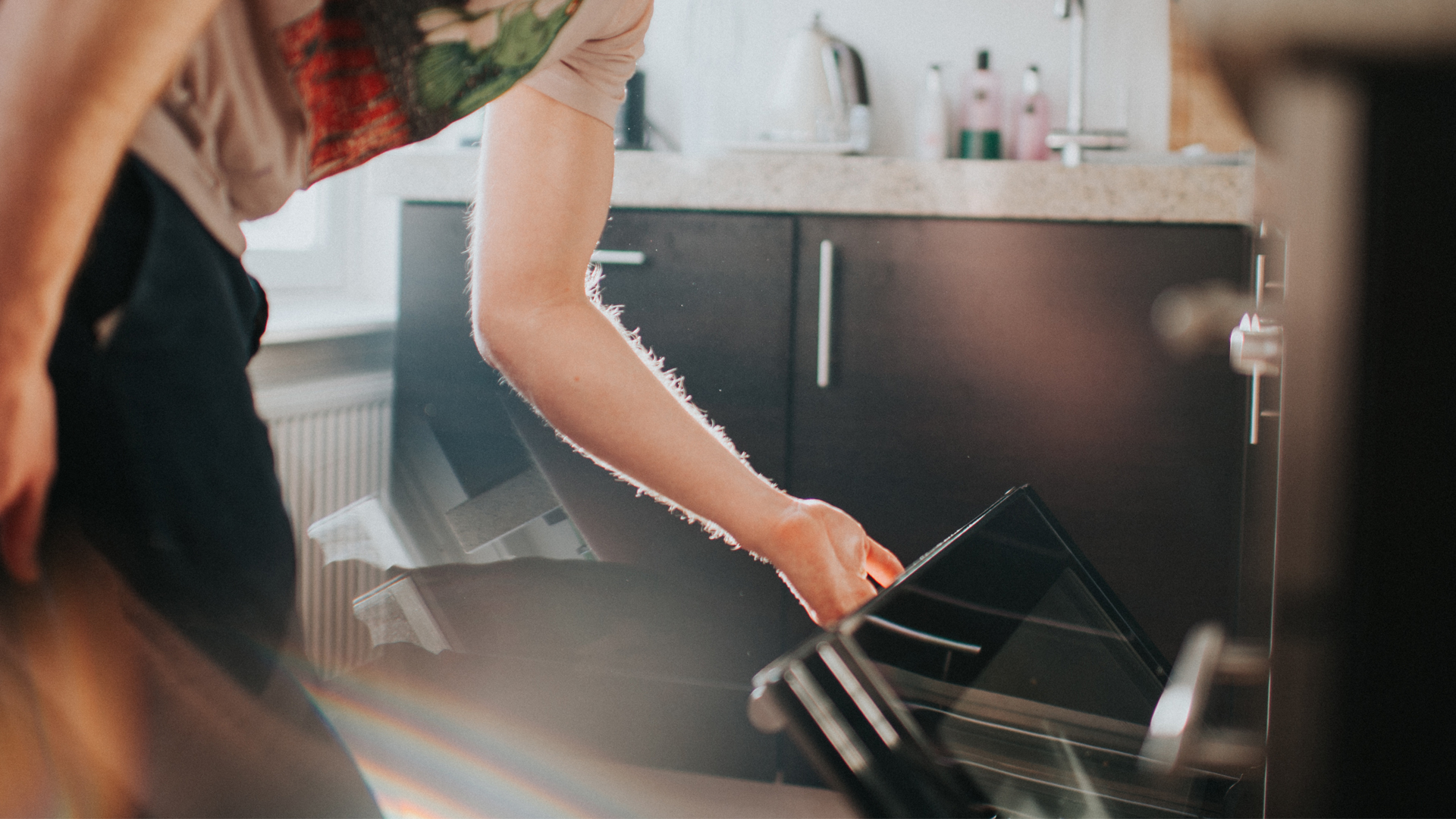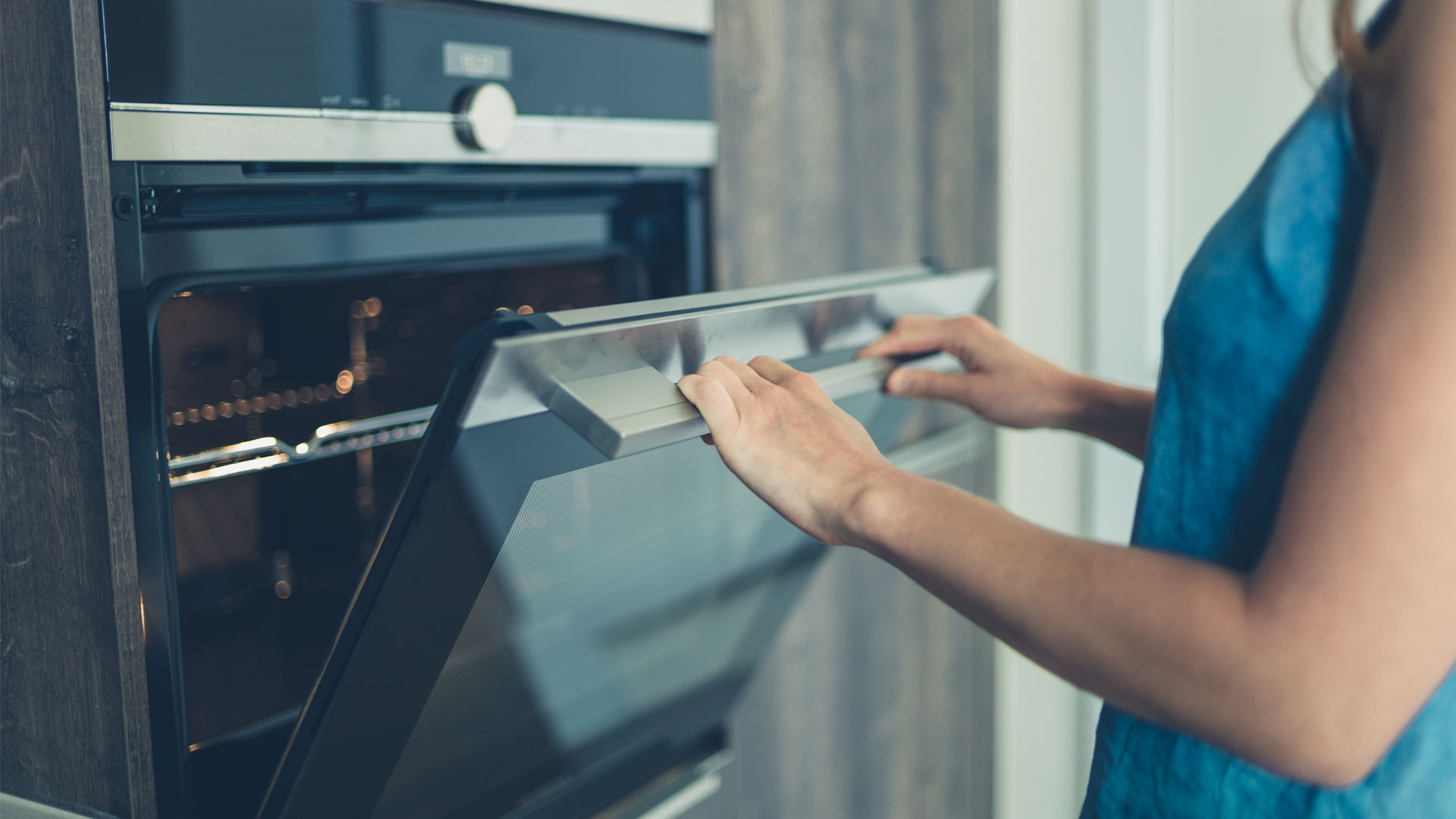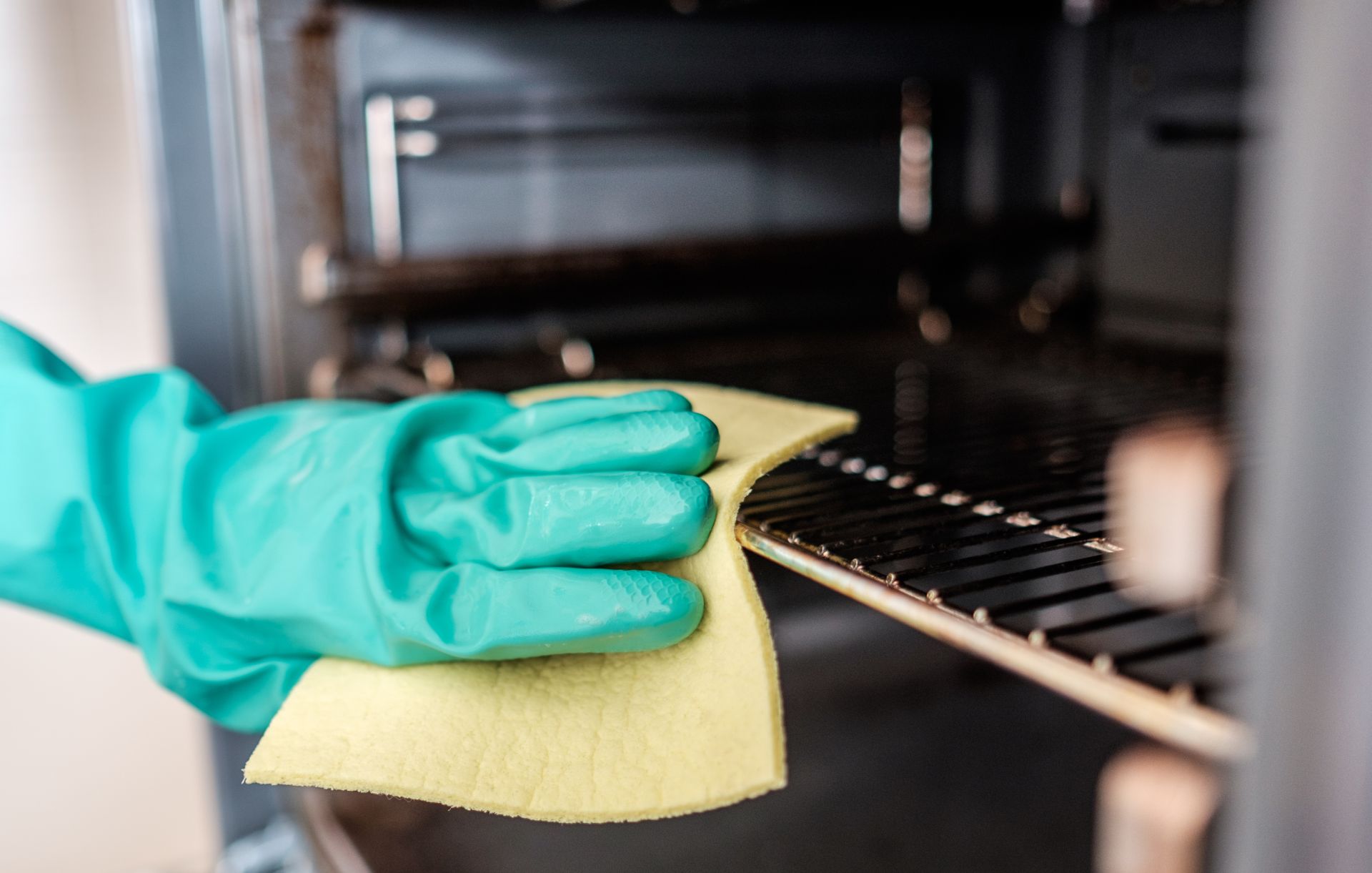How do ovens self-clean?
Here's everything you need to know

Along with sleek looks and added cooking functions, the best ovens increasingly offer a self-cleaning mode, but how do ovens self-clean, and is this process safe?
Cleaning the oven is one of the most dreaded tasks, so the option of buying the best electric range that can take care of the job for you is very tempting indeed. If you’re considering buying an oven that can self-clean and want to learn more about how it works and whether or not it’s a function worth using, this guide is for you. Here, we explain how self-cleaning ovens work, whether it’s safe to use a self-cleaning oven, and how often you should be cleaning your oven, whether you opt for a self-cleaning option or not.
How do ovens self-clean?
Whether it’s from an overflowing pie or a mishap removing your brownies from the oven, we’ve all had those little kitchen spills that require you to give the oven a clean. This can be a hassle, though, because not only do you have to wait for the oven to cool down before you begin the process, but you also have to get down on your knees and start scrubbing the stuck-on crumbs and grease from the door, sides, and bottom of the oven.
A self-cleaning oven can help with this because you don’t have to wait for it to cool down and can start the cleaning process with the push of a button. There are two main ways that your oven can self-clean.

Steam cleaning
Firstly, some ovens have a steam clean mode. This is designed to loosen up dirt, grease, and burnt-on spills by pumping steam around the inside of the oven. Steam is great for killing bacteria (hence why we use it to sterilize baby bottles and freshen up our laundry), and it also adds some moisture to the inside of your oven, which can often be very dry. This will lead to food and crumbs being baked onto the inside of the oven. Steam-cleaning ovens will loosen up any stubborn spills, which makes removing them much easier.
High heat self-cleaning
High heat self-cleaning (also known as pyrolytic cleaning) essentially functions by burning off anything that’s stuck to the inside of your oven using very high temperatures of up to 800ºF. This turns anything that’s stuck to the inside of your oven to ash, which makes it a lot easier to remove from the inside after the cycle has finished.
Which type is best?
There are pros and cons to both high-heat self-cleaning and steam-cleaning ovens. While many find that high-heat cleaning is more effective at removing baked-on grease and spills from the inside of the oven, it can be a less pleasant process than steam cleaning. This is because it gives off smoke and smells from the burning process. Because the temperature goes up so high, a high-heat cleaning oven will also heat up your entire kitchen. This isn’t a mode you’ll want to use on a hot day.
Sign up to receive the latest news, reviews, buying guides and deals direct to your inbox
Steam cleaning gives off no smoke or odors, but many find it to be less effective. This is because water is not the most effective substance when it comes to removing grease.
With both modes, though, you should know that a self-clean mode does not make cleaning the oven a hands-free process. With a high heat clean, you will still need to sweep out the inside of the oven once it has cooled down, to remove the ash and residue that’s left behind. The steam clean mode is also designed to make your work easier, but you will need to wipe out the grease and crumbs once the mode has finished and loosened them from the inside of the oven.

Is it safe to use a self-cleaning oven?
Many will be concerned about using a high-heat self-cleaning oven in their home, as the fumes could potentially be unpleasant or, at worst, dangerous. According to Consumer Reports though, some ovens have considered this risk and added a catalytic converter to their exhaust vents. This will prevent emissions from entering your home.
You should always ensure that you have a carbon monoxide detector in your home to monitor for dangerous fumes, especially if you have a self-cleaning oven.
Another way to make sure you’re safe if you do use a pyrolytic self-cleaning oven is to never open the oven door mid-cycle or even when it’s cooling down. This will release the smoke and fumes into your kitchen. Instead, wait until the oven is fully cooled to open it, which will allow time for the oven fan to work in removing fumes.
Reviews
Whirlpool 24" Stainless Steel AI Dishwasher Review
Napoleon TravelQ PRO285 Portable Gas Grill review
Dreame L40 Ultra Robot Vacuum Cleaner and Mop review: almost hands-free cleaning
GE Profile Smart Mixer with Auto Sense review: a powerful, thorough mixer
Echo eForce DPB-2500 review: a leaf blower as a snow removal tool?
DPAS-2100 + Pro Paddle Attachment review: a new way to remove snow this winter?
Midea MAD53109APK 5.5QT Air Fryer review: a small, simple, and highly effective option
Eureka J15 Pro Ultra Robot Vacuum review: hands-free cleaning for busy families
If you follow these steps, there is no need to worry about using the self-clean mode on an oven. If you still have concerns, though, consider buying a steam cleaning option instead, as this will not produce fumes or smoke as it self-cleans.
How often to clean an oven
According to Bob Vila, you should only use the self-clean mode on an oven sparingly to remove seriously baked-on residue. If possible, remove more superficial spills by hand to prevent them from being burnt onto the inside of your oven over time.
Our guide on how to clean an oven in five easy steps uses entirely natural ingredients, with great results. This means you won’t have to worry about any chemicals making their way into your food, and the only fumes you need to worry about is the slightly vinegary smell the natural cleaning products give off. While you shouldn’t depend on self-cleaning, it is still important to know how often to clean an oven by hand. At a minimum, you should be cleaning your oven every five months. This will prevent any discoloration or serious odors which can emerge over time.

Millie Fender is Head of Reviews at Top Ten Reviews. She also works on our sister sites: Real Homes, Ideal Home, Homes & Gardens, and Livingetc. As Head of Reviews, Millie is on a mission to make sure that we are reviewing all of the latest and greatest products for you and your home, whether it's a vacuum cleaner or an inflatable hot tub.
